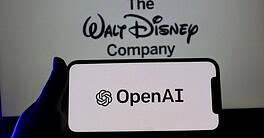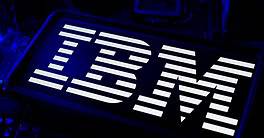Merging with other companies has its financial benefits, but when it comes to IT, not joining all the dots to integrate disparate systems can have serious consequences.

Table Of Contents

Fueled by cheap credit, global M&A activity has hit levels unseen since before the financial crisis. According to Dealogic, global M&A volume for 2014 was $3.6 trillion, up 26% from the previous year. So far this year, Dealogic has logged a record number of megadeals (those valued at more than $10 billion) around the world.
With technology an ever-more-indispensable tool in the corporate toolbox, the success of the merged entity increasingly depends on the seamless integration of IT (information technology)
systems. Yet after the initial push, such work often falls by the wayside as other concerns take priority. But companies that don’t carry out integration to the end pay a hefty price in terms of efficiency—particularly their treasury organizations, which are left flying blind when assessing cash positions.
On the other hand, those that do IT integration right can reap huge benefits. Treasurers are freed of needless duplications while gaining full control over everything from cash-flow forecasts and foreign exchange volatility to liquidity risk management. “The biggest reward of good IT integration is a better utilization of resources,” says Paul DeCrane, global treasury services co-leader at EY in Chicago. “You can take your resources, whether in cash or invested, and deploy them into activities that provide better returns; you can protect yourself from fluctuations in the market, such as interest rates and foreign exchange exposure; and you can strategically help the company invest in areas that provide the most shareholder value.”
With global M&A volume steadily increasing this year and studies demonstrating that the right synergies after a merger can drastically cut costs in the treasury function (Accenture has estimated reductions of up to 40% in some acquisitions), devoting the necessary amount of resources to systems integration should be automatic. However, regardless of the size and complexity of the companies joining forces, integration is demanding and requires dedicated investment.
A treasurer at a European multinational corporation who is now involved in a merger and who agreed to speak on the condition of anonymity says the combined companies are in the process of integrating tools to manage bonds and warranties and monitor and control bank accounts, credit lines and cash forecasting. “We are adopting hedging, e-banking and cash management tools; we are beginning to work with new banks; we are migrating all databases, adapting the work flow,” the treasurer explained. “Right now it’s taking 70% of my time; the process is very time-consuming.”
FINISHING THE JOB

Consolidating IT is expected to have substantial payoffs, according to a 2015 survey conducted by Deloitte of more than 800 executives from across the United States. But approximately 30% of respondents stated that, in their experience, postmerger integration—not limited to treasury—“fell short of success.” According to business management consultants, companies tend to start out strong but get distracted along the way in what is a multistep process.
Generally, there are three stages to IT merger integration: planning for day one and the future-state framework; day-one execution, which largely involves limited systems patches so that both sides of the company can immediately talk to each other; and full integration of all the organization’s processes and systems, says Oksana Kukurudza, a senior executive in the Accenture Finance and Enterprise Services practice based in New York. Day-one integration can take anywhere from three to six months, and future-state integration—up to two years, says Kukurudza.
As things move forward, executives must manage competing interests and must move between the business wanting to launch the joint company as quickly as possible, and IT and treasury needing time to work out the details. “Very few companies make it to the finishing line,” says Edward Brandman, chief information officer of global private-equity firm KKR. “They get to 70% to 80%, but have a tough time staying focused to reach 100%. Other priorities get in the way.”
But Kukurudza says companies would do better to remember that IT is a significant enabler of merger integration. Technology can help, not only in terms of facilitating integration but also as a means to an end. Tony Singleton, managing director for Asia-Pacific at treasury and risk management software and solutions provider Reval, says the Cloud is becoming a more-sought-after delivery mechanism. He points to the example of a client that operates in multiple jurisdictions across the world and that just completed a complex cross-border acquisition. “Thanks to the Cloud, all it took them to bring their new operations online was two weeks in which two users with an Internet browser and a login received some training and connected 100 new bank accounts to the system.”

A merger is an opportunity to review the acquiring company’s and the acquired’s systems and processes and to do away not only with redundancies but also with obsolete infrastructure, while equipping oneself with the latest technology. “When you talk to business leaders about a past M&A deal and ask them what they wish they had done differently, they normally say more discipline about purging tools that were no longer relevant,” says Bob Dvorak, founder and president of KillerIT, an IT program and portfolio management software suite. “M&A represents the chance for a cleanup, when IT should be looked at from a balance-sheet perspective to differentiate between assets that are actually assets and those that may have turned into liabilities, and focus on the former while leaving the latter behind.”
Dvorak says those companies that don’t use M&A as an opportunity for a cleanup may be stuck managing inefficiencies that breed over time. “If you are just piling company B’s stuff on top of company A’s, you can be overwhelmed by overlapping systems and actually increase costs and complexities exponentially,” he explains. On the upside, the benefits of seamless integration are substantial, according to Brandman of KKR. “If you are on a single reporting system, you get one set of truth, one golden copy of your financial data,” he explains.
But to get to that point, good communication is needed—the final, most important element in post-merger IT integration. “My advice is to try and show the executives of the acquired company the value and tangible benefits beyond simple reporting that you can bring with your acquisition and with the successive integration of the two companies,” says François Masquelier, honorary chairman of the European Association of Corporate Treasurers (EACT), senior vice president and head of treasury and enterprise risk management at RTL Group, a leading European entertainment network. Masquelier says benefits can include things like access to credit, better financing terms and a more efficient use of time for the acquired company’s CFO, thanks to a joint treasury center, technical support and advice. “The key success factor is to go visit people in their locations, have physical meetings and make sure people talk to each other. Because if they are not buying what you are selling, they could become extremely resistant to change.”



